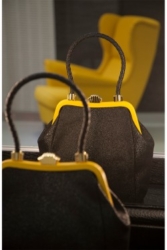Sheep Sleep
By Jo Phillips
From Sheep Shearing to Beds what is this journey? What is this connection and where do they meet? Where the W of wool meets the Zees of sleep that’s where. In the UK we have a long history of rearing sheep and of weaving wools. Although mechanised the process is not so different from hundreds of years ago when done by hand How does the journey from field to yarn work and what makes this craft so special? See below a pictorial start to finish of how the spring ready sheep go all the way from sheering to wool covering for an elegant bed made as a collaboration of two specialist British companies Savoir and fabric Dashing Tweeds.

Firstly, the sheep are shearing ready in the spring in order to gather the fleece. Once shawn the fleece needs to go through several stages before it can be turned into wool.

The wool needs to be prepared which involves cutting out areas that are matted, or are too short or damaged to use. This also involves removing debris, dirt, and oil from the fleece.

Then, the next step is called carding which involves fluffing the fleece by separating the fibers in order to get it ready to spin into yarn.
Roving is the final step before spinning. In this step, the wool is divided into small, even strips called pencil rovings that are collected on large spools.
Next, it goes to be turned into a thread and fabric. The yarn is made by twisting threads together, so it can then be used in fabrics.
Once the yarn is created this is then dyed to the specific colours needed for the design and once the yarns are dyed, the next phase is weaving.
For the weaving process, you have a range of steps, firstly you wind the warp, which are the vertical threads of your cloth, these are then threaded through the heddles which you can see in the image below. These hold all the yarns in place when in the loom and allow the loom to lift and drop certain threads to create the weaving patterns.
Once the loom is set up with the warp, the weft threads which are the horizontal threads on the cloth, are then passed through the warp horizontally, and the warp threads are lifted dependant on the specific pattern and this creates the interconnection of the yarns and the cloth to grow and develop.

It is then set up correctly on the loom to start weaving together. The machines allow for different patterns and colours are created depending on the weave.

These are the warp threads threaded through the heddles to keep them in place and to be able to lift the threads to create certain patterns.

The Savoir bed company has launched an exciting collaboration with British tailor and weave designer Dashing Tweeds.
Savoir beds not unlike wool itself have major importance in British history. The company provided the first beds for guests at the Savoy hotel in London when it first opened. The hotel was considered the uttermost in luxury as it was the first London hotel to have adjacent bathrooms with hot and cold running water as well as having electric lighting as well as the hotel having lifts.
So it was only fitting the beds should be of exacting standards. Unable to find a bed to meet his luxurious levels, D’Oyly Carte the owner of the hotel asked upholsterer James Edwards Limited to create the ultimate bed and so was born the Savoy Bed. So enamored and to ensure complete exclusivity D’Oyly Carte bought James Edwards Limited hence The Savoy Bedworks was born. The company only makes 1000 beds a year to keep each to the highest of standards set way back when.
This fabric TWEED features the ‘Raver’ weave, the collection fuses traditional tweed sportswear with 21st-century technology to create a new urban design for dashing around town, day or night. The fine merino wool incorporates a reflective yarn, with the microscopic beads in the yarn reflecting any beam of light from its surface.
The unique collaborated design is named TWEED and celebrates the fine art of tailored sleep. British craft alongside modern tailoring comes together into a classic piece of furniture.

The bed itself takes hours (over 30) to craft in keeping with the brand’s highest standards of luxury. The luxurious mattress topper is specifically designed to provide an added layer of indulgence and is comprised of a core of soft loose cotton wrapped in swathes of thick wool.
Nº4 mattress topper is wrapped, like all Savoir toppers, in Trellis ticking, designed by Lady D’Oyly Carte in 1905 and used by Savoir ever since.

To ensure your topper stays plump and even, it is carefully hand-tufted and knotted. Feet are slightly elevated for better circulation, and so an aid for a deeper, more restorative sleep.

Find out more about Savoir Beds Here and Dashing Tweeds Here
Images with thanks to both Dashing Tweeds and Savoir.



